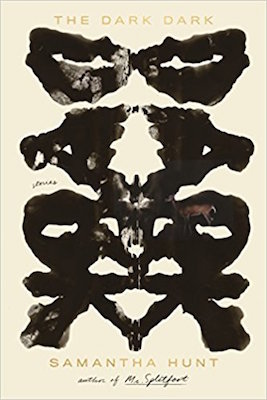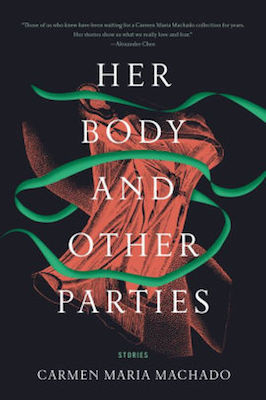By Adam Vitcavage
George Saunders, the 21st century master of short stories, looks for a sense of a human being on the other side of the page. He says short stories are very hard work and oftentimes people hide behind showmanship or tricks to make a story impactful in such a short page count. He mastered these stories over his long career and released them as a collection in 2013. Saunders reached the pinnacle of the art form. This year, he finally released his follow up—only it was a debut novel. Only it was a debut novel instead. A debut that happened to win the Man Booker Prize, by the way.
This year, there was a general consensus on what were some of the best collections. Pulitzer Prize-winning author Jeffrey Eugenides released his first collection. As did Joshua Ferris. Haruki Murakami released his fourth collection translated into English. Hell, even two-time Best Actor Oscar winner Tom Hanks released a terrific collection.
Here are 10 collections—some that have been consensus crowd favorites and some under-the-radar ones—that I felt were the best this year.
The Man Who Shot Out My Eye Is Dead by Chanelle Benz
This collection of short stories succeeds in creating visceral voices over the course of centuries. Chanelle Benz is able to engage readers with invigorating stories from a 16th century monk to a 19th century baroque piece narrated by a chorus of We. "The West of Known,” the opening story, garnered Benz a lot of recognition when it was first published in The American Reader. The story earned her an O. Henry Prize and is an astonishing piece to introduce yourself to her writing. "James III" is a modern piece about violence and family that is narrated from the perspective of a high school freshman in Philadelphia. However, what stands out about Benz's writing is not the thought provoking plot; instead, it is the voice she is able to give James. He feels so real. So do all of her other narrators. Each one is a unique human who really lived. They're not just characters in a short story collection.
The Dark Dark by Samantha Hunt
In her debut collection, Hunt uses her ability to deconstruct the norm by creating lush worlds in a few paragraphs and then flipping it upside down. Metamorphosis, from the literal to figurative, is prevalent throughout these stories. With these changes, she explores womanhood in a roundabout way. A subtle, and peculiar, story involves a woman turns into a deer at night. A more upfront one would be a woman wondering why she and her husband haven’t had sex in nearly a year. Either way you go, Hunt is onto something eerily familiar, but wholly original.
Her Body and Other Parties by Carmen Maria Machado
Off-kilter stories about what it means to be female are a welcome trend. This collection uses hints of reworked fairy tales as a lens to view what society has to say about feminism. One story has a character who can hear porn stars thoughts. Another asks if being a female writer writing about a female writer is a tired trope. One is about sexual history. Through and through, this collection is so enthralling because it has drop dead gorgeous writing. A plot summary only goes so far. It’s the writing that makes this collection so remarkable.
Things We Lost in the Fire by Mariana Enriquez
Enriquez’ stories are vibrant depictions of her native Argentina, mostly Buenos Aires, though she also ventures out to surrounding countries. She fills the dozen stories with compelling characters in haunting stories that evaluate inequality, violence, and corruption. Characters range from social workers to street dwellers—even dark magic users. With those characters, the author explores tourists in Argentina, the rich visiting the slums, plus so many more dynamic areas of her home country.
What it Means When a Man Falls from the Sky by Lesley Nneka Arimah
In tradition with the likes of Chimamanda Ngozi Adichie and NoViolent Bulawayo, this collection features well-crafted and vibrant stories about being black in America while still holding onto roots in Africa. These stories are all nearly about that specific idea, but never feel stale. Throughout the different stories, we meet a wide-ranging spectrum of characters in a variety of settings. Still, she brings a cohesion to the stories that make them feel connected, even though they all stand alone.
The Refugees by Viet Thanh Nguyen
Nguyen’s stories focus on mostly Vietnamese refugees whose stories take place from the 1970s through present day. Some do take place in Vietnam, however, most of the stories take place in America. Nguyen taps into the daunting reality refugees faced in America, but balances the haunting trauma with the beautiful humanity extremely well. None of the stories are necessarily autobiographical. They were influenced by Nguyen’s own experiences as well as what happened to his friends and family. This is important because it is vital to remember where refugees in America came from and what they accomplished. This is one of the most vital books released so far in 2017.
Sour Heart by Jenny Zhang
Using a thread to connect all the stories in a connection can be tricky. You don’t want each story to get stale. Zhang sets her stories mostly in Queens, focusing on the daughters of Chinese immigrants. Zhang uses very direct, in-your-face prose that is tough to swallow at times. She wants you to experience the rawness that these girls have to face every single day. It makes for an obscene collection you wince at, but in a good way.
The King is Always Above the People by Daniel Alarcon
Stories of migration and the toll it takes on families are the centerpiece of this collection. Most of the stories take place in anonymous Latin American cities, which really helps focus on the characters. These people can be anywhere. Alarcon adds flourishes to his stories, never letting them seem as earnest as they appear. He twists and turns until we learn more about the characters in a handful of pages than some authors portray in entire novels.
Difficult Women by Roxane Gay
In Bad Feminist, a collection of essays, Roxane Gay wrote eloquently about race, feminism, and poverty in an accessible way. She continues to use her strong voice in this collection of short stories that take those same themes and weaves them into stories of resilience and power. She avoids stereotypes within character development as well as plot. Her stories truly reflect modern America through the lens of black women. It is an invigorating read that is eye opening and enlightening.
Swimmer Among the Stars by Kanishk Tharoor
Tharoor is preoccupied with language. His stories want to make sense of what we are saying and how we are saying it. Technology plays a heavy role. But don’t be fooled! This isn’t science fiction. It’s an influence for sure, but these stories have a foot in the normal—even the mundane—while the other foot dips into the fantastical. He’s a stylish writer with plenty left to showcase.





































